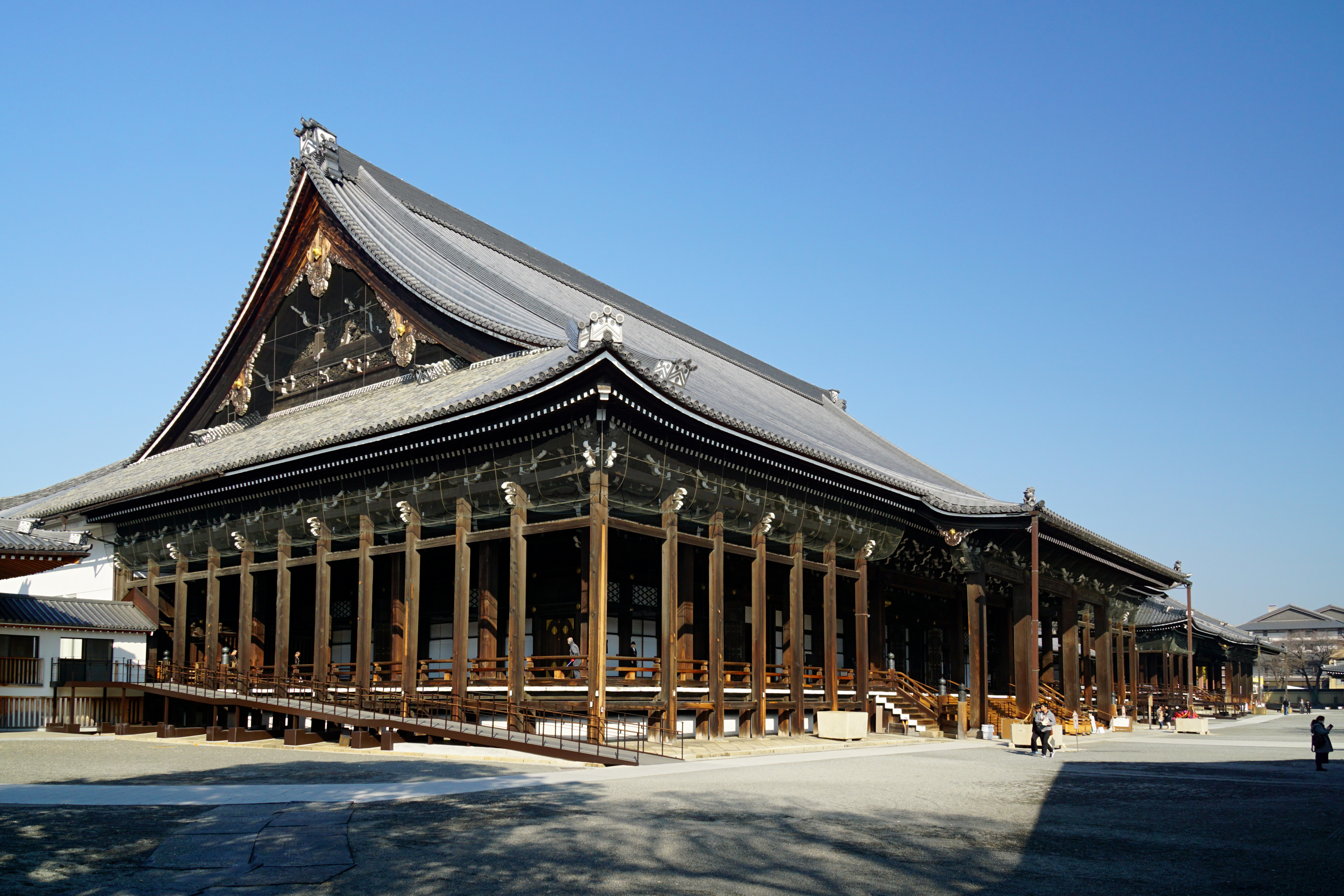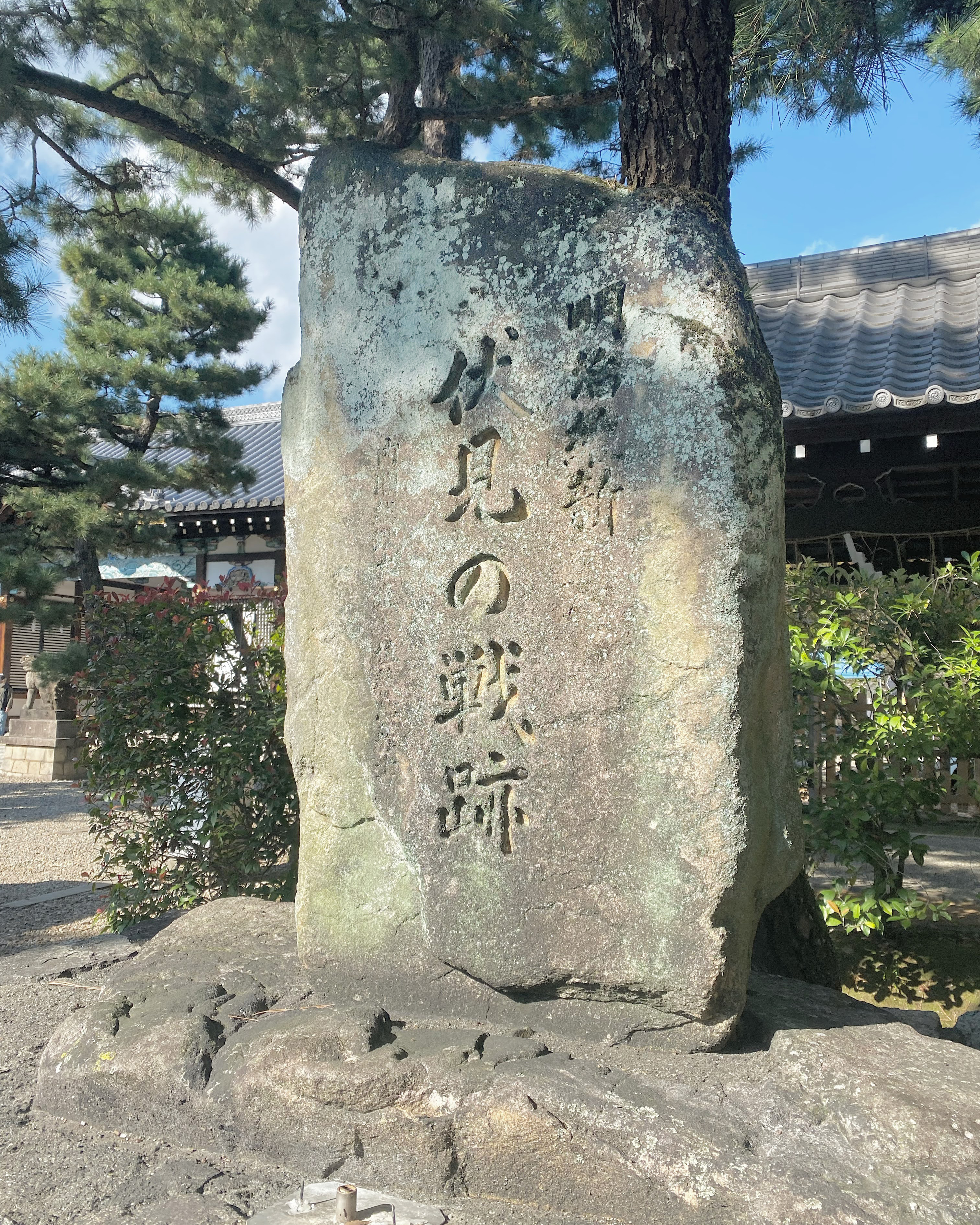|
Sarugatsuji
The is the northeast corner of the wall of the Kyoto Imperial Palace. Summary Under the influence of the Chinese cosmology imported by the Imperial Court in Kyoto, Imperial Court in ancient times, the became an object of superstition. In any building, the exterior corner facing northeast, called a , was believed to provide a means by which evil spirits and bad luck could enter. In order to prevent such things from entering the palace grounds, the northeast corner was built in an unusual concave shape. By avoiding a convex Vertex (geometry), vertex pointing in the direction of the ''kimon'', the wall, and indeed the entire palace, could be regarded as technically having no "northeast corner". This was long regarded as a reliable Apotropaic magic, apotropaic technique for "sealing" the ''kimon''. A wooden sculpture of a monkey wearing an was placed under the eaves of the ''Sarugatsuji''. This is believed to have been done because the shinshi of Hiyoshi Taisha, Hiei Shrine, loc ... [...More Info...] [...Related Items...] OR: [Wikipedia] [Google] [Baidu] |
Kyoto Imperial Palace
The is the former palace of the Emperor of Japan, located in Kamigyō-ku, Kyoto, Japan. Since the Meiji Restoration in 1869, the Emperors have resided at the Tokyo Imperial Palace, while the preservation of the Kyoto Imperial Palace was ordered in 1877. Today, the grounds are open to the public, and the Imperial Household Agency hosts public tours of the buildings several times a day. The Kyoto Imperial Palace is the latest of the imperial palaces built in the northeastern part of the old capital of Heian-kyō (now known as Kyoto) after the abandonment of the Heian Palace that was located to the west of the current palace during the Heian period. The Palace lost much of its function at the time of the Meiji Restoration, when the capital functions were moved to Tokyo in 1869. However, Emperor Taishō and Shōwa still had their enthronement ceremonies at the palace. Layout The Palace is situated in the , a large rectangular enclosure north to south and east to west. It a ... [...More Info...] [...Related Items...] OR: [Wikipedia] [Google] [Baidu] |
Devil's Door
A devil's door is a structural feature found in the north wall of some Medieval architecture, medieval and older churches in the United Kingdom. They are particularly common in the historic county of Sussex, where more than 40 extant churches have one. They supposedly have their origins in the early Christian era, when pre-Christian worship was still popular, and were often merely symbolic structures—although they were sometimes used as genuine entrances. In a 2023 study, historian Geoffrey Sedlezky argues that the idea of a devil's door is a late 19th-century invention. Although the idea refers to medieval liturgical practices, the assumption that the northern church door was associated with the devil is a retrospective reconstruction, largely fuelled by 19th-century preoccupation with the occult. In addition, there was a great interest in the historicisation of medieval churches, which led to the search for an explanation for the frequent occurrence of closed-up northern e ... [...More Info...] [...Related Items...] OR: [Wikipedia] [Google] [Baidu] |
Hitokiri (film)
is a 1969 Japanese samurai film directed by Hideo Gosha set during the end of the Tokugawa shogunate and based on the lives of the historical Four Hitokiri of the Bakumatsu. It is notable for starring the famous author Yukio Mishima. Plot Okada Izō is a rōnin born into poverty who joins the , a group of Imperial loyalists based in Tosa and headed by Takechi Hanpeita. Izō soon becomes a well known and successful killer, and he is stubbornly loyal to Hanpeita. However, Sakamoto Ryōma warns him that he is merely "Takechi's dog" and that Hanpeita will end up betraying him. After Izō fouls a night attack by the Kinnō-Tō on Ishibe Station by revealing his identity, Hanpeita's wrath at his blunder and resentment at his own subordinacy begins to test Izō's loyalty. Eventually abandoning Hanpeita, the regretful Izō returns and apologizes. He is then ordered to assassinate the aristocrat outside the Sarugatsuji using the sword of Tanaka Shinbei. During his interrogation over ... [...More Info...] [...Related Items...] OR: [Wikipedia] [Google] [Baidu] |
Tanaka Shinbei
was one of the Four Hitokiri of the Bakumatsu, elite samurai, active in Japan during the late Tokugawa shogunate in the 1860s. Biography The Hitokiri Shinbei worked under the command of Takechi Hanpeita, the leader of the Kinnō-tō, who sought to overthrow the Tokugawa shogunate and restore the Emperor of Japan to power. Hanpeita ordered Shinbei and the other hitokiri to enact "Heaven's punishment" (天誅, Tenchū) against supporters of the Shogunate and supporters of foreign access to Japan. A hitokiri from the Satsuma District, Shinbei came from a peasant background. After his first high-level assassination, he was elevated to samurai status despite the traditional samurai disdain towards peasants. Shinbei was involved in the assassination of Ii Naosuke, the head of the Edo Council of Elders who was the head of administration for the Tokugawa shogunate in 1860. This assassination sparked years of violence in Japan especially in Kyoto where assassinations became commonp ... [...More Info...] [...Related Items...] OR: [Wikipedia] [Google] [Baidu] |
Nishi Hongan-ji
is a Buddhist temple in the Shimogyō ward of Kyoto, Japan. It serves as the head temple of the sub-sect Honganji-ha. It is one of two temple complexes in Kyoto, the other being Higashi Hongan-ji, which is the head temple of the sub-sect Ōtani-ha. Established in its current location in 1591, the origin of the temple goes back to the 14th century. Many of its building have survived from the Azuchi-Momoyama and early Edo period, making it a great example of the Japanese architecture from the 17th and 18th centuries. A total of seven Nishi Hongan-ji structures have been designated National Treasures in three different categories: the karamon, Goei-dō and Amida hall ( temple buildings), the Flying Cloud Pavilion, shoin and the Black study hall, including the Denrō gallery (residences) and the north Noh stage ( miscellaneous structure). Nishi Hongan-ji was designated a UNESCO World Heritage Site in 1994, as part of the Historic Monuments of Ancient Kyoto. History The or ... [...More Info...] [...Related Items...] OR: [Wikipedia] [Google] [Baidu] |
Traditional Japanese Architecture
A tradition is a system of beliefs or behaviors (folk custom) passed down within a group of people or society with symbolic meaning or special significance with origins in the past. A component of cultural expressions and folklore, common examples include holidays or impractical but socially meaningful clothes (like lawyers' wigs or military officers' spurs), but the idea has also been applied to social norms and behaviors such as greetings, etc. Traditions can persist and evolve for thousands of years— the word ''tradition'' itself derives from the Latin word ''tradere'' literally meaning to transmit, to hand over, to give for safekeeping. While it is reportedly assumed that traditions have an ancient history, many traditions have been invented on purpose, whether it be political or cultural, over short periods of time. Various academic disciplines also use the word in a variety of ways. The phrase "according to tradition" or "by tradition" usually means that what follows i ... [...More Info...] [...Related Items...] OR: [Wikipedia] [Google] [Baidu] |
Buildings And Structures In Kyoto
A building or edifice is an enclosed structure with a roof, walls and windows, usually standing permanently in one place, such as a house or factory. Buildings come in a variety of sizes, shapes, and functions, and have been adapted throughout history for numerous factors, from building materials available, to weather conditions, land prices, ground conditions, specific uses, prestige, and aesthetic reasons. To better understand the concept, see ''Nonbuilding structure'' for contrast. Buildings serve several societal needs – occupancy, primarily as shelter from weather, security, living space, privacy, to store belongings, and to comfortably live and work. A building as a shelter represents a physical separation of the human habitat (a place of comfort and safety) from the ''outside'' (a place that may be harsh and harmful at times). buildings have been objects or canvasses of much artistic expression. In recent years, interest in sustainable planning and building prac ... [...More Info...] [...Related Items...] OR: [Wikipedia] [Google] [Baidu] |
Harakiri
, also known as , is a form of Japanese ritualistic suicide by disembowelment. It was originally reserved for samurai in their code of honor, but was also practiced by other Japanese people during the Shōwa era (particularly officers near the end of World War II) to restore honor for themselves or for their families. As a samurai practice, ''seppuku'' was used voluntarily by samurai to die with honor rather than fall into the hands of their enemies (and likely be tortured), as a form of capital punishment for samurai who had committed serious offenses, or performed because they had brought shame to themselves. The ceremonial disembowelment, which is usually part of a more elaborate ritual and performed in front of spectators, consists of plunging a short blade, traditionally a ''tantō'', into the belly and drawing the blade from left to right, slicing the belly open. If the cut is deep enough, it can sever the abdominal aorta, causing death by rapid exsanguination. One of ... [...More Info...] [...Related Items...] OR: [Wikipedia] [Google] [Baidu] |
Battle Of Toba–Fushimi
The occurred between pro-Imperial and Tokugawa shogunate forces during the Boshin War in Japan. The battle started on 27 January 1868 (or fourth year of Keiō, first month, 3rd day, according to the lunar calendar), when the forces of the shogunate and the allied forces of Chōshū, Satsuma and Tosa Domains clashed near Fushimi, a town near Kyoto, the sacred capital, and fighting progressed to the Toba road leading to Osaka, with the initial rout of the Satsuma from Fushimi. The battle lasted for four days, ending in a decisive defeat for the shogunate. Background On 3 January 1868, the restoration of imperial rule was formally proclaimed. ''Shōgun'' Tokugawa Yoshinobu had earlier resigned his authority to the emperor, agreeing to "be the instrument for carrying out" imperial orders. The Tokugawa shogunate had ended. However, while Yoshinobu's resignation created a nominal void at the highest level of government, his apparatus of state continued to exist. Moreover, the To ... [...More Info...] [...Related Items...] OR: [Wikipedia] [Google] [Baidu] |
Northeast
The points of the compass are a set of horizontal, radially arrayed compass directions (or azimuths) used in navigation and cartography. A '' compass rose'' is primarily composed of four cardinal directions—north, east, south, and west—each separated by 90 degrees, and secondarily divided by four ordinal (intercardinal) directions—northeast, southeast, southwest, and northwest—each located halfway between two cardinal directions. Some disciplines such as meteorology and navigation further divide the compass with additional azimuths. Within European tradition, a fully defined compass has 32 "points" (and any finer subdivisions are described in fractions of points). Compass points or compass directions are valuable in that they allow a user to refer to a specific azimuth in a colloquial fashion, without having to compute or remember degrees. Designations The names of the compass point directions follow these rules: 8-wind compass rose * The four cardinal directi ... [...More Info...] [...Related Items...] OR: [Wikipedia] [Google] [Baidu] |





